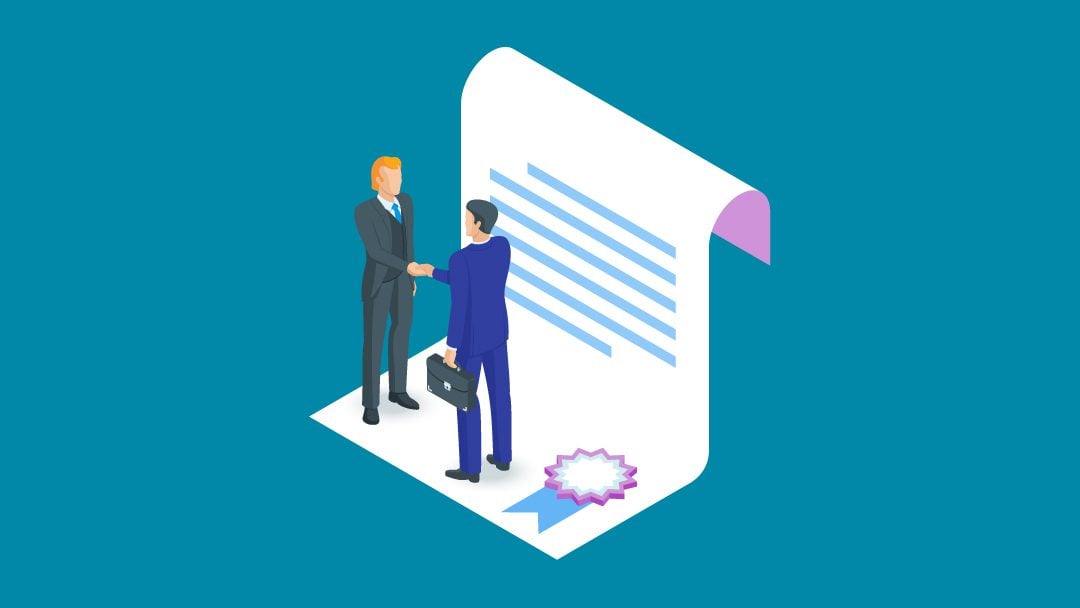Closing a new project usually depends on how you present yourself and your work. One of the most influential moments with a new prospect is when they receive your proposal. It can be a make-or-break moment. When your proposal creates a positive impression with the client and makes them feel like you are the right person for the job, they won’t hesitate to move forward.
In this post, we’ll look at how a well-designed and well-formatted proposal helps you land better clients every time. We’ll cover what needs to happen before you even send the proposal. Then, we’ll go through the steps to take to create and format your proposal and finally how to deliver it.
Subscribe To Our Youtube Channel
First Steps Before Putting Together Your Design Proposal
Have a Conversation / Discovery Call
In order to send an interested client a great proposal, you first need to have a conversation with them. This initial conversation also called a discovery call, is important for a number of reasons. First, you need to know the best way to communicate with each other. For example, are they versed in design lingo or do they have no idea and only know they need a designer? Knowing this will help you with the wording in the proposal. When you speak the client’s language, they feel seen and understood.
Here are some questions to ask during the discovery call, we’ll assume the client needs a website for their business:
- What does your company do?
- Why do you offer what you offer?
- How is your company different from the competition?
- Who are your clients? (Ask for a detailed description)
- What kind of website do you need? ie: Size, design style, e-commerce, interactive, custom graphic design.
- How soon do you need it?
- What does your budget look like?
- Is the content ready?
- Do you have a brand style guide?
Don’t forget to take notes!
The answers to all these questions are golden. You can’t put together a proposal or even start work without a discovery call. As you ask these questions, you will also get to know the client a little and they will get to know you. It will be obvious early on if there is a good rapport between you. A positive call is always great, but remember that nothing is set in stone until they accept your proposal and sign the contract. Do NOT start working until all that has been taken care of.
Do The Research For Their Industry
After the discovery call, it’s time to get to know the client’s industry. If you have previously worked in that industry or similar you can skip this step. If not, then do some research online. Look for competitors, check out some similar products and services. Take notes on the lingo and the vocabulary.
Search the terms which have to do with the industry on social media to see what people talk about in relation to it. Read a couple of blog posts, look at some websites. Get a feel for the industry before starting your proposal.
Calculate The Time You’ll Need For The Project
The last thing before starting the proposal is to calculate how long it will take you to prepare what they are expecting of you. I don’t suggest you offer a per-hour price as this will always go against your favor. But to get a per-project price, you do have to calculate how many hours you think it will take you.
Take into account what they told you about their budget, but don’t let that limit you. If your work is worth more than what they have available, don’t underprice your services. The point of a well-designed proposal is that they will pay what you are worth, even if their initial budget is below it.
Your Design Proposal
Now it’s time to put together your design proposal!
The main idea when creating a successful design proposal is to showcase your creativity, your personal style, brand, and uniqueness. When the client sees the proposal, they must feel inspired first by how good it looks. After that, they must feel heard and connected. That’s why it’s important to listen to everything they say in that discovery call and to take notes.
Let’s take a look at the most important points to consider when creating the proposal.
The Layout / Design
Generally speaking, a proposal is in letter format. But that doesn’t mean that it’s a rule set in stone. Your proposal can be a horizontal presentation, a scrollable infographic, or something else entirely. As long as it looks good, is easy to understand as well as open and view, then your only limit is your creativity. When designing the proposal, stay true to your brand and style. Use the same language you use on your website and include any brand visuals like logos or illustrations.
The Format
Below is an outline to help you format your design proposal. Don’t forget to proofread everything!
1. The introduction. The introduction includes a cover page, a presentation letter, and a table of contents of the full proposal. Also, include an option to download a printable version of the document.
2. What you offer. The client might have contacted you for web design, but you should let them know if you also have graphic design experience or if you offer motion graphics. Just a nice little list will do.
3. Your story. In this section, present yourself and your team if you have one. Show off your strengths without exaggerating. Be honest and candid.
4. Give a price. Now it’s time to give them a price for what they need. Give one sum but separate it into chunks. Be broad in your categorization, you don’t want them picking at your budget to save a few bucks here and there. Give an honest explanation as to why your prices are what they are.
5. Propose a timeline. Offer a timeline that you are sure you can commit to. Take into account what they told you about their own timeline. If you are fully booked for a month and won’t be able to work with them until next month, explain why you’re worth the wait.
6. Another price list. Make sure to include other services you can offer in a nice list that explains why they might need those services. For example, monthly update reviews, website changes by the hour, etc.
7. Give proof of your worth. Show tidbits of your portfolio as case studies and testimonials. Make your work look amazing with professional mockups. Include some links but check on them first to see if your design hasn’t been changed.
8. Say thanks. Add a final page saying thank you for their time. This last page is common in pitch decks, why shouldn’t it be in proposals too?
Deliver The Proposal
Send your proposal to the client with an easy to access link. A PDF might be too big to add inside an email. Don’t forget the printable version just in case the client wants to print it. Deliver the link in a short email with a short and simple subject line that catches their attention. In the message, thank the client for their consideration and give any instructions as to how to download the proposal, or view it online. Make it easy for them.
Use The First Proposal as a Base For The Rest
Once you’ve created one proposal you can reuse the format for another client. You can even use sections again like the proof of worth section, what you do, and the additional price list. The second proposal and onwards will be faster and easier to create than the first. Be sure to always double-check that you haven’t left any traces of a previous client when reusing the proposal.
Conclusion
In this post, we looked at how to land a client with a well-designed proposal. Following this format should help you land better clients than before. As a web designer, had you ever put so much thought into a proposal? Were you just sending an email with a lump sum and expecting the best? Let us know your thoughts in the comments.
Featured image via d3verro / shutterstock.com









An additional step would be to add some free value to the approached client. This will help in closing the clients with ease. Great article overall. Keep posting more.
I’m curious if anyone here has insight on how to propose phases of development. I have a client who is willing to move forward on a handshake. I politely refused that as I’m new to mixing freelance work into landing my own clients. Basically, I’m in the very ground-level stages of starting a business. This client wants a site built and maintained, social media presence, and SEO. He has none of that now, but has a successful and established business. Delightfully, he has educated himself well and expects to spend a minimum amount that is reasonable if my scope is specific. The market value of all of his ask is several thousand dollars above his minimum. I want to be realistic with him on that. How do I do that in a proposal? We discussed this thoroughly, but I want to convey it accurately in my proposal. My conception of that is to propose phases of development and cost. Thanks for any advice!
I’ve used a website called BetterProposals to send out quotes in the past. There are other similar sites that:
1. Have predesigned templates (and not only for web design purposes).
2. Have a tracked delivery process – you can see when your emailed proposal has been opened, and how long each page was viewed.
3. Allow you to tack on prices for optional services such as hosting, maintenance, add ons and so on.
I found this a more effective solution than slapping together a Word doc or pdf.
Hope this helps someone who excels at creative work but struggles with structuring a brief or who needs a head start.
BetterProposals was awesome, thank you!
You also need to have a very good understanding of what you’re competitors are going to pitch.
Maybe I’m lucky, ignorant or both but I don’t create a proposal until the client has essentially agreed to the project. I’ve already sold them verbally on the price, they know who I am and what we do and what the project entails. The proposal is really a formality. I’ve written too many proposals in the past only to get them rejected for price or something else. It’s a lot of work to create a decent proposal so I just skip that step and create what is really the legal agreement with some specifics about the project. The bulk of the work about the specifics is done in the discovery phases, which I’m getting paid to do.
Same here.
Thanks for that article, made so much sense and i have some work to do now
Good point Daniel! You’re right. Thanks for pointing that out.
knowledgeable post, Thanks for sharing.
Hmm… Never just email a proposal without scheduling the next meeting (90% of cases clients struggle to understand every bit of the proposal, so they end up unanswered and keep you waiting)
So last steps:
1. get them on Calendar
2. send email w/ proposal